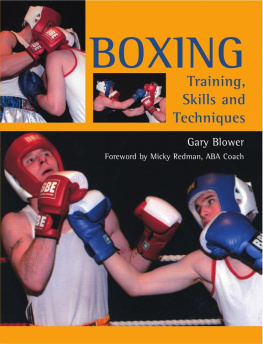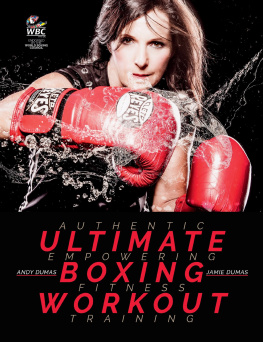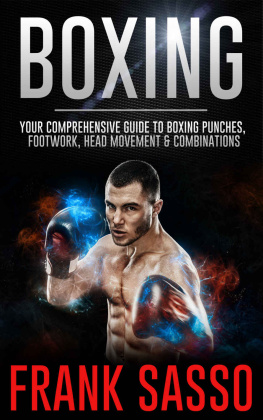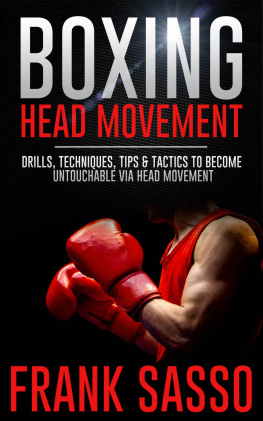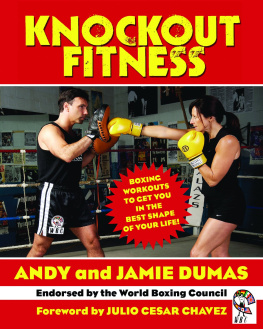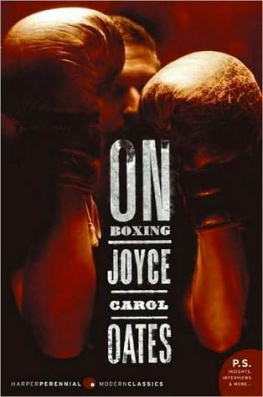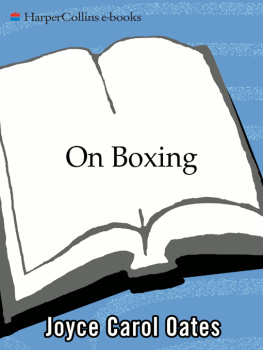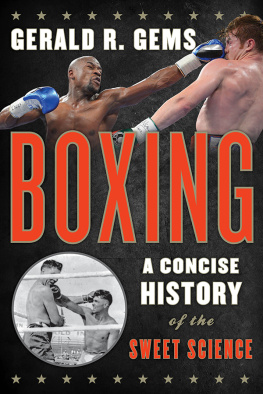KNOCKOUT

KNOCKOUT
The Boxer and Boxing in American Cinema
Leger Grindon

www.upress.state.ms.us
The University Press of Mississippi is a member
of the Association of American University Presses.
Copyright 2011 by University Press of Mississippi
All rights reserved
Manufactured in the United States of America
First printing 2011
Library of Congress Cataloging-in-Publication Data
Grindon, Leger, 1949
Knockout : the boxer and boxing in American cinema/
Leger Grindon.
p. cm.
Includes bibliographical references and index.
ISBN 978-1-60473-988-6 (cloth : alk. paper)
ISBN 978-1-60473-989-3 (ebook) 1. Boxing films
United StatesHistory and criticism. I. Title.
PN1995.9.B69G75 2011
791.43658dc22 2010041348
British Library Cataloging-in-Publication Data available
To my wife, Sharon
ACKNOWLEDGMENTS
Throughout this project I have sought recommendations for improvements. My friends and colleagues have responded with generosity. Their assistance has contributed grace and reason to the manuscript and rendered the shortcomings that remain much less conspicuous.
Parts of this book have appeared as essays in journals, including Cinema Journal [Body and Soul: The Structure of Meaning in the Boxing Film Genre, Cinema Journal 35:4, pp. 5469, Copyright 1996 by University of Texas Press]; Journal of Sport and Social Issues, Cineaste [review of Unforgivable Blackness, Cineaste 30:22, Spring 2005, pp. 5052]; and Quarterly Review of Film and Video, and in books including Routledge Encyclopedia of Narrative Theory, edited by David Herman, Manfred Jahn, and Marie-Laure Ryan (London: Routledge, 2005); Encyclopedia of the Documentary, edited by Ian Aitken (New York: Routledge, 2005); Martin Scorseses Raging Bull, edited by Kevin J. Hayes (New York: Cambridge University Press, 2005); and Clint Eastwood, Actor and Director: New Perspectives, edited by Leonard Engel (Salt Lake City: University of Utah Press, 2007). Thanks to each of these publications for encouraging my work and extending rights to include materials from these essays in my book.
Many others have offered valuable help as this manuscript took shape. Middlebury College provided financial assistance through the Ada Howe Kent summer research fellowship and the Faculty Professional Development Fund. I learned from students at Middlebury College, including Molly Boyle and Maura Whang, who read and helped me with my manuscript. My faculty colleagues at Middlebury College have listened to my ideas, offered constructive advice, loaned videos, and read passages of various parts of my manuscript. These individuals include Doug Sprigg, Holly Allen, Ed Smith, Ann Morey, Jeffrey Ruoff, Jim Ralph, Ted Perry, Don Mitchell, Chris Keathley, Jason Mittell, John Bertolini, and Tim Spears.
Cinema colleagues from far and wide have helped with their advice, letters of support, and intellectual encouragement. These colleagues include William Rothman, Charles Ramirez Berg, Susan Ryan, Aaron Baker, Charles Maland, Charles Musser, Toby Miller, David Herman, Ed Buscombe, Peter Lehman, Frank Tomasulo, Leonard Engel, Robert Sklar, Wheeler W. Dixon, and Kevin J. Hayes. Richard Porton and Cindy Lucia, editors at Cineaste, have been helpful friends and advisors. My friend, journalist George Bellerose, has offered me a perspective from outside the academy that provided common sense and gracious assistance. Sarah Kozloff has encouraged my work throughout the years with her unstinting good will and outstanding scholarly example. And finally I am grateful to the steadfast support and affection of my wife, Sharon. I thank all these as well as the wider community of friends and associates who contributed to this work.
KNOCKOUT
1
WHY THE BOXING FILM?
The Meaningful Structure of the Boxing Film Genre
Poetics must begin with genre.
MEDVEDEV/BAKHTIN, [1978, 175]
The boxer stands alongside the cowboy, the gangster, and the detective as a figure that has shaped Americas idea of manhood. Beyond the sport itself, the boxers significance was developed through the fiction of Jack London and Ernest Hemingway, the painting of Thomas Eakins and George Bellows, and the drama of Clifford Odets. But no art has shaped our perception of the boxer as much as motion pictures. The pugilist arose as a popular figure in Hollywood cinema with the advent of sound and appeared in over one hundred feature films released between 1930 and 1960 (see for a listing of the most prominent titles). During the decade 197585, the screen boxer experienced a comeback in numerous films, including the enormously commercially successful Rocky series (19762006) and the critically esteemed Raging Bull (1980). More recently, Million Dollar Baby (2004), Unforgivable Blackness: The Rise and Fall of Jack Johnson (2004), and Cinderella Man (2005) testify to the boxers continuing influence. However, aside from a few essays and a history of boxing in early cinema before 1912, there has been no significant study of the screen boxer (Sayre 1977, Sarris 1980, Baker 2003, Streible 2008). This book analyzes the boxing film in American cinema as a genre shaped by evolving conventions and engaged in a discourse vital to our culture.
The screen boxer embodies the physical: a strong man striving for power in a metropolis dominated by money, position, and cunning. His body becomes a commodity that is consumed in his struggle for dominance. As a result, the boxers body dramatizes an implicit discourse on the conditions of oppression. As Pam Cook explains, The boxing pic has often been used as a vehicle for left-wing ideas, and the virile working-class hero is a prevailing image in the iconography of socialist politics (Cook 1982, 42). Like Robert Warshows gangster, the boxer is a tragic figure; he personifies a division between body and spirit, and since time dictates the deterioration of the flesh, he is destined for a fall (Warshow 1975). The reason for, and purpose of, suffering arise as questions central to the genre. The boxers agony sparks a search for values beyond the body, raising questions about American materialism. Thus, the boxing film addresses the limitations of the physical and implies a quest for a worthy alternative.
Hollywood movies have been described as a cinema of stars and genres. A film genre is a flexible story formula based upon a body of conventions intuitively shared by the audience and filmmakers. Hollywood genres, such as the science fiction film, the Western, and the musical, have produced many of Americas most popular and celebrated films. In the cinema, contemporary genre analysis has focused on evolving narrative conventions as dramatizations of pervasive social conflicts. As Thomas Schatz explains, genre criticism addresses familiar stories that involve dramatic conflicts, which are themselves based upon ongoing cultural conflicts (Schatz 1981, viii). Guided by the practice of Schatz, among others, I will define the boxing film genre and describe its conventions, including animating conflicts, model plot, major characters and settings, boxings mise-en-scne, and the viewers typical emotional response, followed by a consideration of genre history. This chapter concludes with a consideration of the goals of genre criticism and an outline of this book.
Next page

